Archive For The “Hardware” Category
Last night, Tom Klienpeter sent me The Official Report of the Fukushima Nuclear Accident Independent Investigation Commission Executive Summary. They must have hardy executives in Japan in that the executive summary runs 86 pages in length. Overall, It’s an interesting document but I only managed to read in to the first page before starting to…
Cooling is the largest single non-IT (overhead) load in a modern datacenter. There are many innovative solutions to addressing the power losses in cooling systems. Many of these mechanical system innovations work well and others have great potential but none are as powerful as simply increasing the server inlet temperatures. Obviously less cooling is cheaper…
I love solar power, but in reflecting carefully on a couple of high profile datacenter deployments of solar power, I’m really developing serious reservations that this is the path to reducing data center environmental impact. I just can’t make the math work and find myself wondering if these large solar farms are really somewhere between…
In the past, I’ve written about the cost of latency and how reducing latency can drive more customer engagement and increase revenue. Two example of this are: 1) The Cost of Latency and 2) Economic Incentives applied to Web Latency. Nowhere is latency reduction more valuable than in high frequency trading applications. Because these trades…
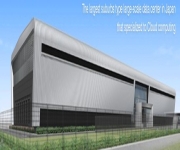
Occasionally I come across a noteworthy datacenter design that is worth covering. Late last year a very interesting Japanese facility was brought to my attention by Mikio Uzawa an IT consultant who authors the Agile Cat blog. I know Mikio because he occasionally translates Perspectives articles for publication in Japan. Mikio pointed me to the…
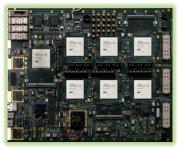
Years ago, Dave Patterson remarked that most server innovations were coming from the mobile device world. He’s right. Commodity system innovation is driven by volume and nowhere is there more volume than in the mobile device world. The power management techniques applied fairly successfully over the last 5 years had their genesis in the mobile…
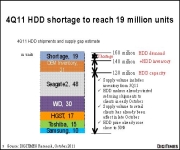
As rescue and relief operations continue in response to the serious flooding in Thailand the focus has correctly been on human health and safety. Early reports estimated 317 fatalities, 700,000 homes and 14,000 factories impacted with over 660,000 not able to work. Good coverage mostly from the Bangkok Post is available at Newley.com authored by…

From the Last Bastion of Mainframe Computing Perspectives post: The networking equipment world looks just like mainframe computing ecosystem did 40 years ago. A small number of players produce vertically integrated solutions where the ASICs (the central processing unit responsible for high speed data packet switching), the hardware design, the hardware manufacture, and the entire…
I’ve been posting frequently on networking issues with the key point being the market is on the precipice of a massive change. There is a new model emerging. · Datacenter Networks are in my way · Networking: The Last Bastion of Mainframe Computing We now have merchant silicon providers for the core Application Specific Integrated…
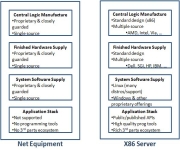
Great things are happening in the networking market. We’re transitioning from vertically integrated mainframe-like economics to a model similar to what we have in the server world. In the server ecosystems, we have Intel, AMD and others competing to provide the CPU. At the layer above, we have ZT Systems, HP, Dell DCS, SGI, IBM,…
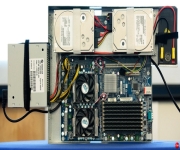
This note looks at the Open Compute Project distributed Uninterruptable Power Supply (UPS) and server Power Supply Unit (PSU). This is the last in a series of notes looking at the Open Compute Project. Previous articles include: · Open Compute Project · Open Compute Server Design · Open Compute Mechanical Design The open compute uses…
Google cordially invites you to participate in a European Summit on sustainable Data Centres. This event will focus on energy-efficiency best practices that can be applied to multi-MW custom-designed facilities, office closets, and everything in between. Google and other industry leaders will present case studies that highlight easy, cost-effective practices to enhance the energy performance…
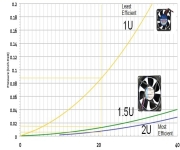
Last Thursday Facebook announced the Open Compute Project where they released pictures and specifications for their Prineville Oregon datacenter and the servers and infrastructure that will populate that facility. In my last blog, Open Compute Mechanical System Design I walked through the mechanical system in some detail. In this posting, we’ll have a closer look…
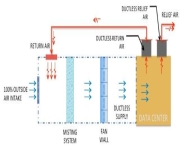
Last week Facebook announced the Open Compute Project (Perspectives, Facebook). I linked to the detailed specs in my general notes on Perspectives and said I would follow up with more detail on key components and design decisions I thought were particularly noteworthy. In this post we’ll go through the mechanical design in detail. As long…
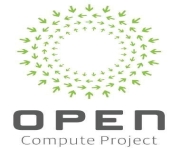
The pace of innovation in data center design has been rapidly accelerating over the last 5 years driven by the mega-service operators. In fact, I believe we have seen more infrastructure innovation in the last 5 years than we did in the previous 15. Most very large service operators have teams of experts focused on…
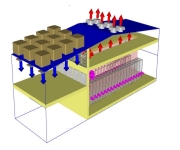
A bit more than a year back, I published Computer Room Evaporative Cooling where I showed an evaporative cooling design from EcoCooling. Periodically, Alan Beresford sends me designs he’s working on. This morning he sent me a design they are working on for a 7MW data center in Ireland. I like the design for a…